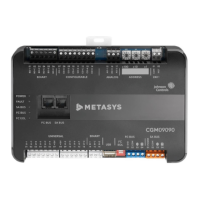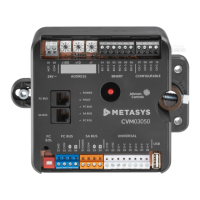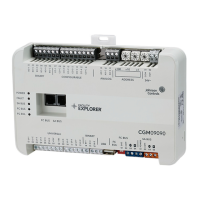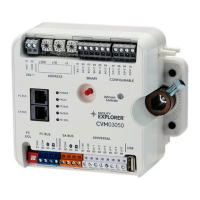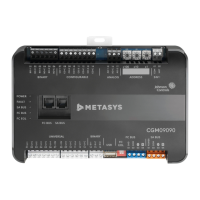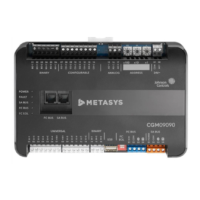Introduction CK721-A Installation and Operation
1-12 24-10349-8 Rev. B
This document contains confidential and proprietary information of Johnson Controls, Inc.
© 2012 Johnson Controls, Inc.
TCP/IP
TCP/IP (Transmission Control Protocol/Internet Protocol) is a standard protocol
allowing different devices, both hardware and software, to communicate over a
network. For example, a network device can be a PC running an accounting
application from a central server. Specific to Cardkey systems, network devices are
the servers (running the P2000 software), networked remote Workstations, hubs,
and the CK721-A panel.
While TCP/IP contains what may be thought of as a suite of network protocols,
these two are the most important. TCP/IP is the primary network protocol used in
UNIX systems. The phrase used here, UNIX systems, may seem confusing when one
sees that computer network access is primarily accomplished through Microsoft
®
Windows-based operating systems, not UNIX systems. However, the servers (Web
servers, for example) have generally been UNIX-based. Windows NT and Windows
2000, which have become popular as a network server operating systems in recent
years, also use TCP/IP as a communication protocol. This is because the purpose of
network protocols is to connect different devices.
Addressing
From an installation and operation standpoint, the only aspect of the TCP/IP
protocol most users are concerned with is the IP address. Each networked device on
a TCP/IP, 10/100Base-T Ethernet, must be assigned a unique IP address. The
CK721-A is no exception. In basic terms, network communication is accomplished
through the transmission and receipt of packets. Packets contain a variable length of
data, along with the IP address of the device to which the packet is addressed. A
network device knows its own IP address and accepts (or rejects) packets based on
the match of that address. This is a very basic description, and as stated earlier, more
information is available from a variety of other sources.
The network device must have a unique IP address. The performance of an entire
network can be compromised if two devices share the same address.
10/100Base-T Ethernet
10/100Base-T Ethernet (also referred to simply as 10/100Base-T) is the physical
network connecting the P2000 server to the CK721-A panels. 10/100Base-T
provides reliable connections using a series of hubs to lengthen a network’s distance
at a local level. Bridges, routers, and network switches increase a network’s size to
greater distances across states or over continents.
The basic unit of 10/100Base-T networks (and others as well) is the LAN (Local
Area Network). Johnson Controls recommends the P2000 system be on its own
LAN, meaning a single self-contained network not connected to any other network.
This will allow you to maintain security and implement a simple IP addressing
scheme.

